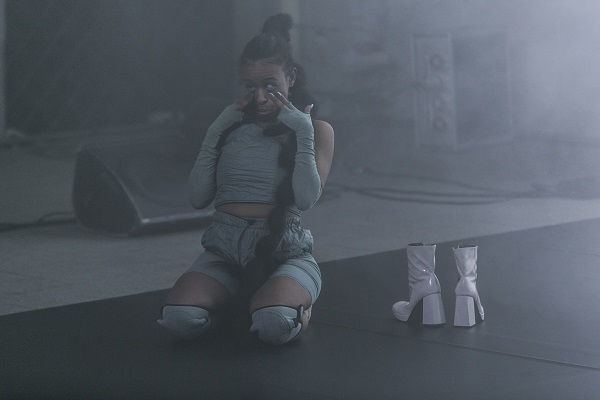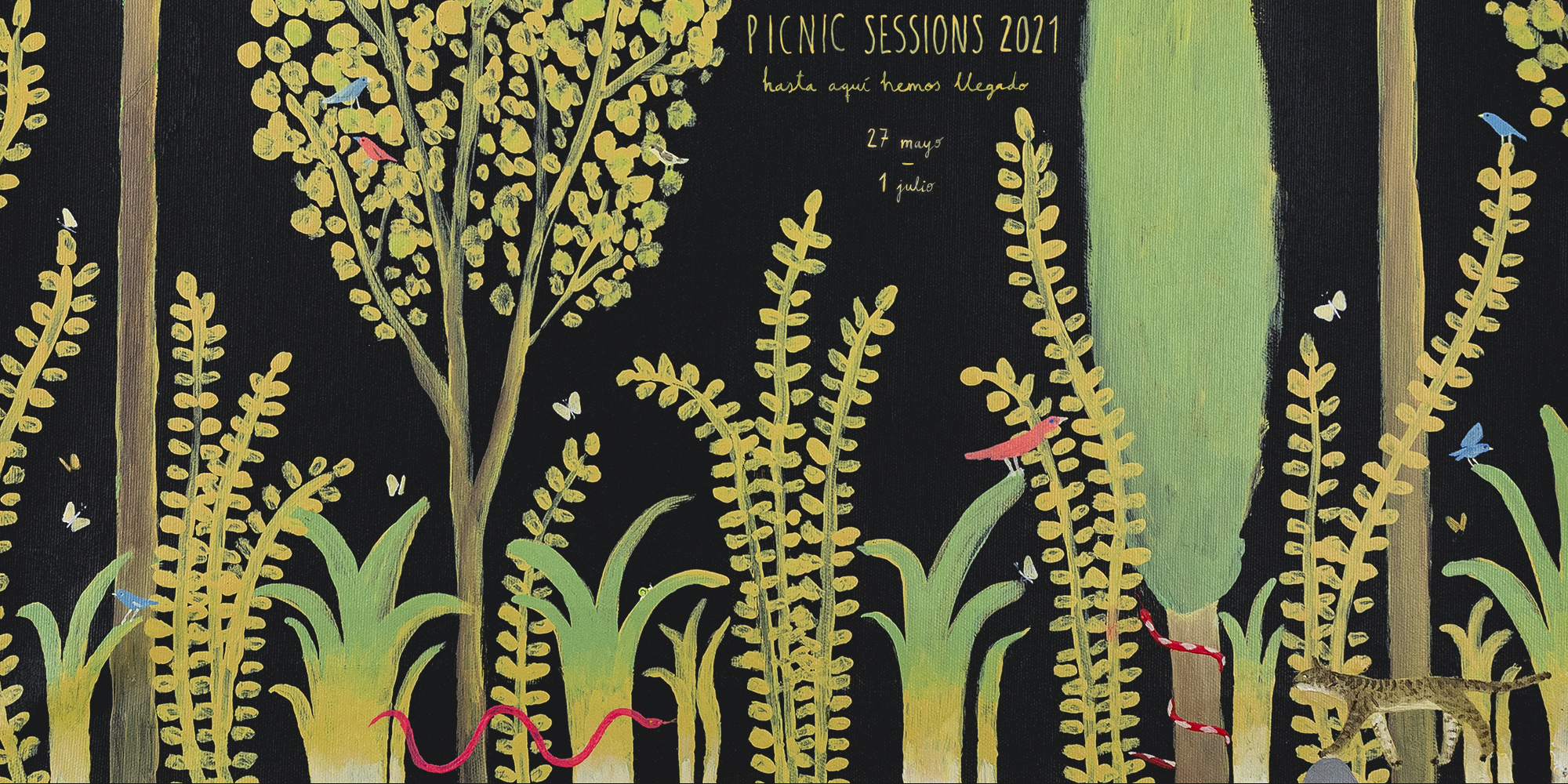
BLACK MÓSTOLES. Madrid Negro Laboratory
(AFTERNOON ACTIVITY WITH PRE-REGISTRATION STARTING 4 JUNE)
Black Móstoles is an initiative of the Madrid Negro team, an artistic investigation project based on historical memory and the contemporary heritage of Black and Afro-descendant people in the Community of Madrid. This time, the project is centred in the periphery, in the town of Móstoles, where we will unpack the stories of marronage and resistance among Black and Afro-descendant people. Through an immersive poetry and sound route, we invite the residents of Móstoles to walk through the city streets from another place of listening. The purpose of this activity is a conversation that reflects on and commemorates intra-history.
Yeison F. García (1992, Cali). A political scientist, poet and researcher, he self-identities as Afro-Colombian and Afro-Spanish. He is the curator of the Festival Conciencia Afro (2016, 2017, 2018 and 2019), the director of the Espacio Afro Cultural Centre and the co-curator of the show La memoria colonial en las colecciones Thyssen-Bornemisza [Colonial Memory in the Thyssen-Bornemisza Collections] held at the Museo Nacional Thyssen-Bornemisza.
María Paula Irizarry Guzmán (1997, Cabo Rojo). She is an Afro-Puerto Rican and pan-Caribbean historian and political scientist. She has a dual degree from the Universidad de Puerto Rico in Political Science and History of the Americas and an inter-university master’s degree in Contemporary History from the Universidad Autónoma de Madrid with a thesis on Hispanism and its geopolitical and identity implications on Puerto Rico.
Nieves Cisneros Pascual (1995, Madrid). A multidisciplinary artist and researcher, she is the director of Viola Odorata (Honourable Mention at the 34th Certamen Arte Joven Castilla y León in 2022) and Nuestro Mapa (2019, Tecnica della Rappresentazione de Claudia Castellucci series). One of her most prominent papers is about her research into her Afro-Cuban great-grandfather Joaquín Pascual Síboris, a musician and founding member of the Madrid Philharmonic Orchestra.
Malcolm Riascos (1996, Cali). He is a film and digital communication professional with an emphasis on business management and scriptwriting for film and television. A director, editor and photographer, he is the co-founder and CEO of MIDMEDIA (2016), a company that works in advertising, music and film.
Rubén Monsuy (1985, Bata). Raised in Bioko, he is a documentary film and TV scriptwriter and director at the Madrid Film Institute. His prominent works include Lámpara (2013 Ceiba Award at the South-South Travelling Film Festival, FECIGE) and J”osefina: Árbol de muchas ramas (produced by ACIGE and financed by UNICEF).
PHOTO courtesy of the collective
Instagram: @madridnegro.lab

TEMPORARY UNDULATIONS II. In the Wake: Experimental Black Thinking Laboratory
Voices and bodies appear in Móstoles 2024 which reactivate the Black-maroon memory that has always existed but not been recounted. Fugitive, underground voices, collective whispers that tell the story of a transatlantic fable that connects the revolutionary Haiti of 1804 with the rebellious Móstoles calling for independence in 1808. There is a common nexus between the two of them: post-revolutionary Napoleonic France, which insisted on keeping up Black slavery in its colonies in the Caribbean and Haiti. One figure, Toussaint, a time-traveller, whispers to us through the dreams and sound of Yembé about the secrets unleashed of the two connected declarations. A trip back in time.
In the Wake is a theoretical-artistic collective made up of artists and thinkers from the Afro-diaspora who live in Spain. It emerged in Madrid in 2021 with the goal of exploring forms of Black Radical Thinking in Spain, as well as contributing to activating it. Constructing a story around the Afro-diasporic memory in the colonial metropole must necessarily start with the search and hunt for the footprints of this memory in the cultural archive, as well as unpacking what ancestral forms of knowledge transmission were developed in a territory where ‘narratives of anti-Black de-territorialisation’ dominate. From In the Wake, we have traced, found and reconstructed the stories of resistance of Black people in the Kingdom of Spain. Through its research and activation work, it has connected different artists on the international Afro scene with creative Afro communities in the Community of Madrid.
PHOTO Matadero Madrid / Estudio Perplejo
Instagram: @inthewakelab

ODDARA FESTIVAL. Afro Consciousness
In Yoruba, Oddara means ‘everything is fine’. The Oddara Festival invites you to connect with ancestrality, the spirituality of the drum, flavour and joy, desire, African and diasporic beats.
Afro Consciousness is a cultural, social and political project created in 2016 whose mission is focused on contemporary artistic creation, the production of critical thinking and the promotion of community projects that revolve around the right to culture and to the city. The Espacio Afro Cultural Centre, which opened in 2022, promotes cultural democracy by facilitating the creation and dissemination of projects spearheaded by people and organisations belonging to the African and Afro-descendant communities, as well as other immigrant and/or racialised peoples and communities, with the idea of contributing to building a city where intercultural coexistence is fostered.
PHOTO Tamarind flower
Instagram: @fiestaoddara @espacioafro

ORUN SECO - CLOSURE. Yunieski Gil, Ignacio Calderón and Osikán – Creation Incubator
Orun Seco is a sacred sequence played with batá drums to close a wemilere (festival) in Santería. Orun Seco is heard directly by Orishas, heralds the end of the festive ceremony and leaves blessings for the space and the participants with the spiritual and percussive power of the leather drumheads.
Godmother told me that to close a ceremony, a festival or a series properly, you have to play the drum and invoke its mystery. To close it properly you also have to express gratitude and embrace. We are closing the Picnic Sessions 2024 with the drums of Osikán and a collective embrace, and Godmother is going back to her hills’ eye, grateful and happy, leaving us the seeds of ball moss, snowberry, yaya stick and amansaguapo.
Godmother whispers in my ear: this museum terrace is no longer a garden; it is a jungle, and now you have to care for it. Godmother looks from the highest step in the stands, and before flying away on her fugitive slave’s twig broom she sings::
goodbye folks / goodbye folks / I’ll be back another year / I’ll be back another year / that you’re all here
PHOTO La Casa Encendida/ Estudio Perplejo
Instagram: @osikan_vivero_de_creacion




















